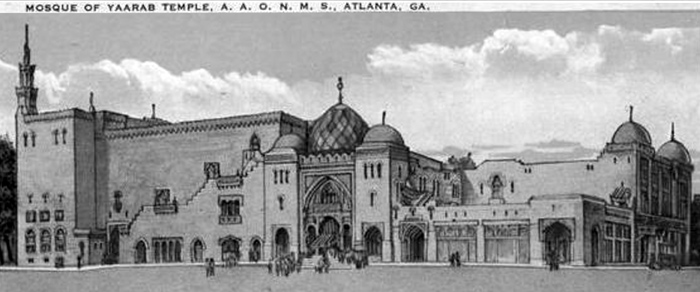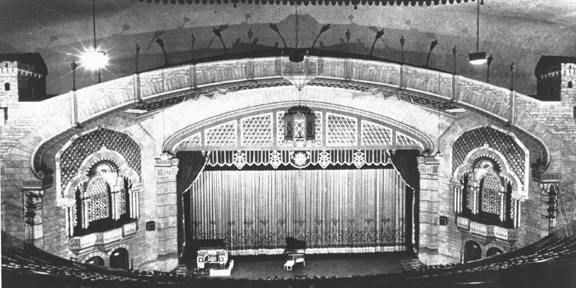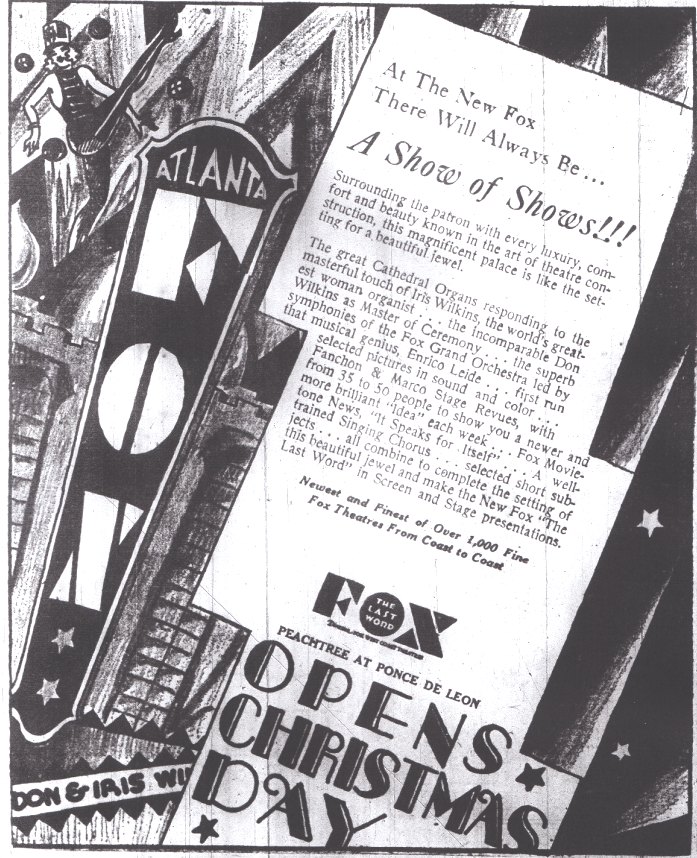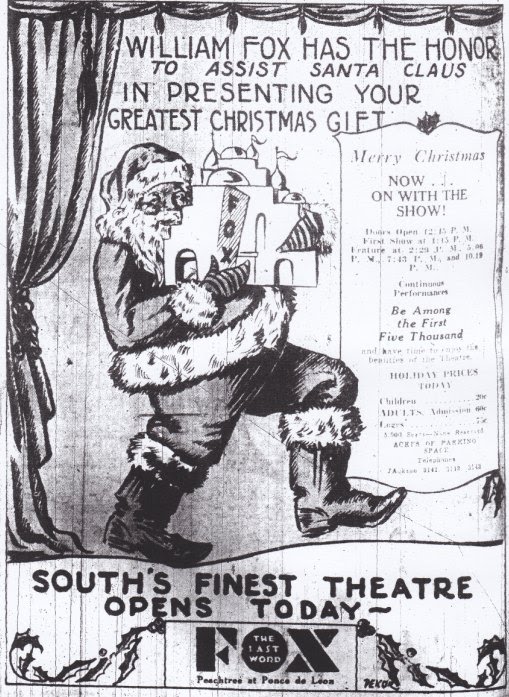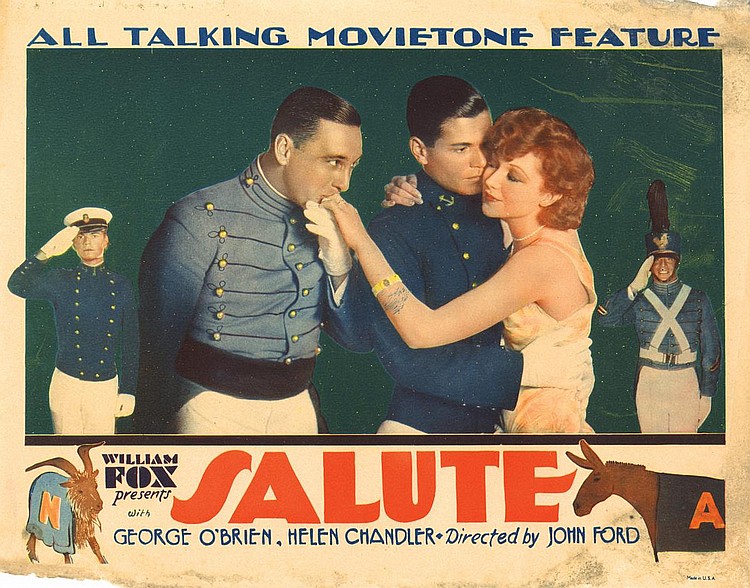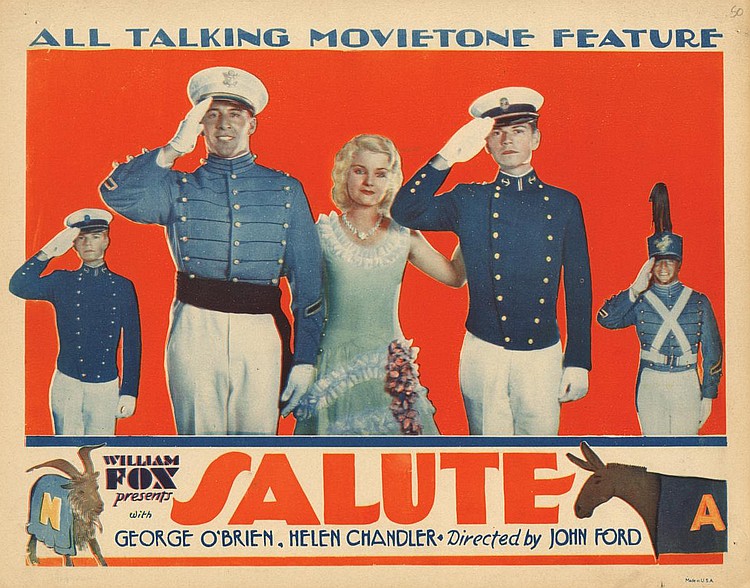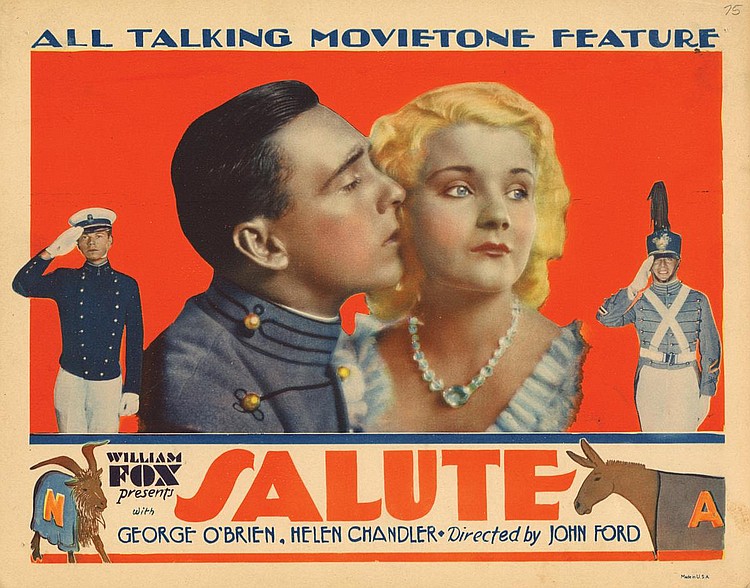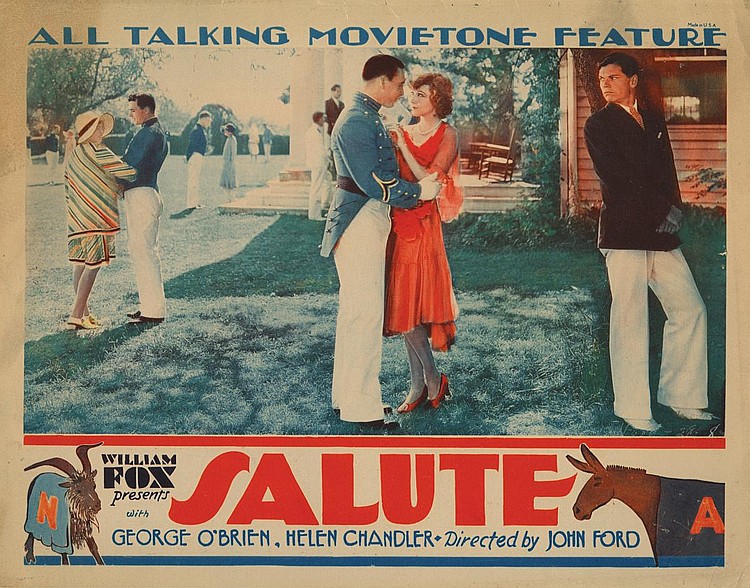
A History of the Atlanta Fox Theatre
Part One
"The Magic of Work Well Done"
Pre-Beginings Through Construction 1872 to 1929
By Hal Doby
Originally written, March 1996, last revision: January 19, 2017
For almost 88 years, the Fox Theatre in Atlanta has stood out
as one of the architectural gems of Atlanta. During its life,
it has been a testament its architects that
the integrity of their original design has stood the test of time.
But while the Fox Theatre has operated as a movie theatre in its auditorium since it opened
in 1929, the building was not designed specifically to be a movie
palace. Rather it was envisioned and built to be the headquarters or as they call it:
a Mosque Temple for the local Shriner's group, the Yaarab
Temple.
Thus, it all starts with the Masons...
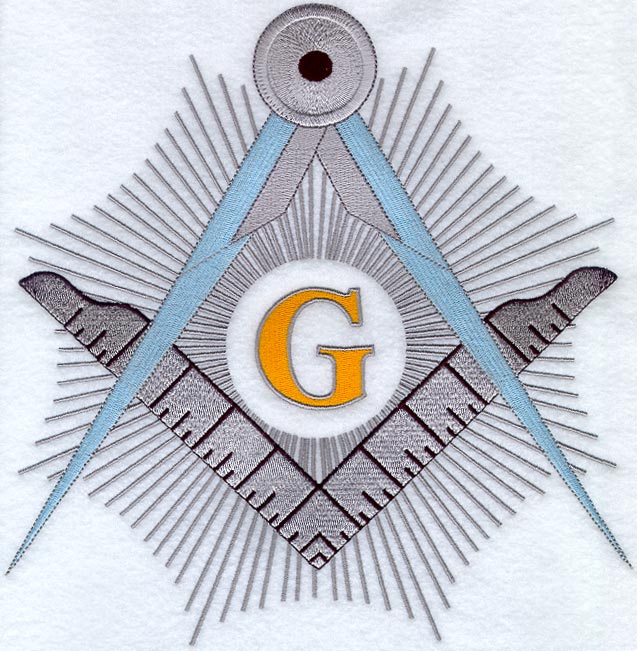 Freemasonry,
or as it is more well known today as simply "The Masons", are a fraternal
organization that arose from obscure origins in the late 16th or early
17th century. Freemasonry exists in various forms all over the world,
with a membership estimated at several million men. The fraternity is
administratively organised into independent Grand Lodges or sometimes
"Orients", each of which governs its own jurisdiction.
Freemasonry,
or as it is more well known today as simply "The Masons", are a fraternal
organization that arose from obscure origins in the late 16th or early
17th century. Freemasonry exists in various forms all over the world,
with a membership estimated at several million men. The fraternity is
administratively organised into independent Grand Lodges or sometimes
"Orients", each of which governs its own jurisdiction.
In 1870, there were around several thousand Masons living in Manhattan,
New York. Many "well to do" Masons made it a point to lunch at the
Knickerbocker Cottage, a restaurant at 426 Sixth Avenue. There was one
group of 12 Masons that met regularly that had an idea of a new
social fraternity for Masons. Two of the regulars, Walter M.
Fleming, M.D. a prominent physician and surgeon, and William J.
Florence, a renowned actor, took the idea seriously enough to do
something about it.
Florence had toured London, Europe and Middle Eastern countries, always
playing to capacity audiences. While on tour in Marseilles, France,
Florence was invited to a party given by an Arabian diplomat. The
entertainment was something in the nature of an elaborately staged
musical comedy. At its conclusion, the guests became members of a
secret society. Florence thought what he experienced
could well be the
vehicle for the new Masonic fraternity. He made copious notes and
drawings about the function. On two other occasions he attended the
same type of ceremony, once in
Algiers and again in Cairo. When he returned to New York in 1870, he
presented his ideas and notes to Dr. Fleming. Fleming in turn took the
ideas
supplied by Florence and created the framework of what would become the
Ancient Arabic Order of the Nobles of the Mystic Shrine (A.A.O.N.M.S.).
While there is some question about the origin of the Fraternity's name,
it is probably more than coincidence that its initials, rearranged,
spell out "A MASON."

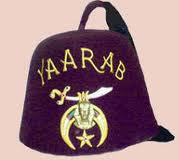 With
the help of other Knickerbocker Cottage regulars, Fleming concieved and
drafted rituals, designed the emblem as well as ritual costumes,
formulated a
salutation, and declared that members would wear a red fez. As with the
Freemasons, it was to be a men's only group. In order to join the
group, you had to be a full member in good standing with the Masonic
Order.
With
the help of other Knickerbocker Cottage regulars, Fleming concieved and
drafted rituals, designed the emblem as well as ritual costumes,
formulated a
salutation, and declared that members would wear a red fez. As with the
Freemasons, it was to be a men's only group. In order to join the
group, you had to be a full member in good standing with the Masonic
Order.
It must be noted that this Arabesque theme was selected because it
embodied what was seen as mystic and exotic connotations. Since that
time, sensibilities and political correctness combined with the state
of the Middle East have changed drastically. Doing something similar in
this day and age could now be perceived as utterly politically
incorrect. It cannot be stressed enough that the Arabic theme used by
the Shriners is purely
decorative. The group does not have any leanings for or against Arabic
politics or religious traditions.
On September 26, 1872, in the New York City Masonic Hall, the first
Shrine Temple in the United States was organized. It was proposed that
the first Temple be named Mecca. The original 13 Masons of the
Knickerbocker Cottage lunch group were named Charter Members of Mecca
Temple.
The organization was not an instant success. While a second Temple had
formed in Rochester in 1875, almost four years after the Shrine's beginnings,
there were only 43 Shriners, all but six of whom were from New York. At
a Mecca Temple meeting on June 6, 1876, a new body was created to
help spur growth. A new governing body was created and called "The
Imperial Grand Council of the Ancient Arabic Order of the Nobles of the
Mystic Shrine for the United States of America." Fleming became the
first Imperial Grand Potentate. The new body established rules for
membership and the formation of new Temples. The initiation ritual was
embellished, as was the mythology about the fraternity. An extensive
publicity and recruiting campaign was initiated. The idea worked and in
just two years the group grew to include 425 Shriners in 13 Temples By 1888
there were 7,210 members in 48 Temples located throughout the United
States and 1 in Canada.
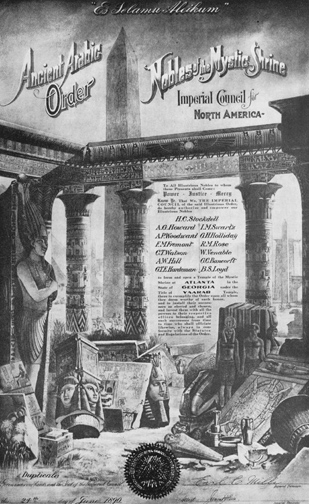 In
December 1889,
thirty-two Masons of the Knights Templar and Scottish Rite orders in
Atlanta organized the
Yaarab Temple "Shrine" in Atlanta. The Yaarab
Temple was made a full chapter of the Shriner's organization in June of
1890. In the beginning, the Yaarab Temple met at the Atlanta Masonic
Lodge. Membership in the Yaarab Temple grew quickly as it was a very popular group to belong to.
In
December 1889,
thirty-two Masons of the Knights Templar and Scottish Rite orders in
Atlanta organized the
Yaarab Temple "Shrine" in Atlanta. The Yaarab
Temple was made a full chapter of the Shriner's organization in June of
1890. In the beginning, the Yaarab Temple met at the Atlanta Masonic
Lodge. Membership in the Yaarab Temple grew quickly as it was a very popular group to belong to.
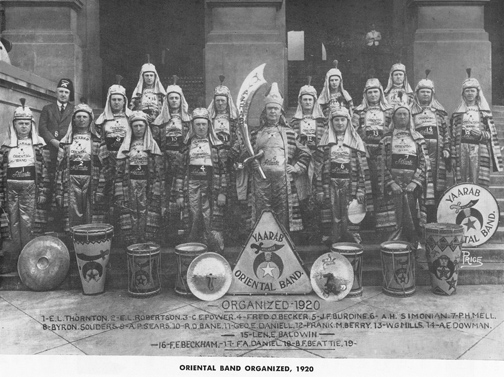
Plans for the Yaarab Temple Shrine to build a purpose-built Mosque
Temple in
Atlanta
began to
formulate well before 1916 when they announced their intentions
to begin their first fundraising drive to accumulate the
money
needed
to construct what was planned to be a massive Mosque Temple. A
committee was formed to explore the project. After their review,
the project was put on indefinate hold after it was decided the Temple
could not afford the construction costs at that time.
 In 1920 and with a membership of nearly 4,000 members, they relocated their base of operations from the Masonic Lodge to a
house located on Peachtree Street near Ellis Street in 1920 (Pictured Left).
Because of its size and the Shrine's large membership, I imagine formal meetings
that comprised large
numbers of members still took place at some other
large venue. That same year, two lots, one on Ivy Street and another on
Baker Street were purchased as potential sites for the Temple's new
Mosque.
In 1920 and with a membership of nearly 4,000 members, they relocated their base of operations from the Masonic Lodge to a
house located on Peachtree Street near Ellis Street in 1920 (Pictured Left).
Because of its size and the Shrine's large membership, I imagine formal meetings
that comprised large
numbers of members still took place at some other
large venue. That same year, two lots, one on Ivy Street and another on
Baker Street were purchased as potential sites for the Temple's new
Mosque.
In 1923, the two properties were sold off and third location was
purchased on the corner of Peachtree Street and Kimball
Street (later renamed
Ponce DeLeon Avenue), for the location of their new Mosque Temple.
The purchase price was $225,000 that took nearly two years for the
Temple to pay off. At
the time, this location was disconnected from the Downtown
district of
Atlanta and was considered by the fashionable as about as far outside
the city where one could reside if they worked in the Downtown
district.
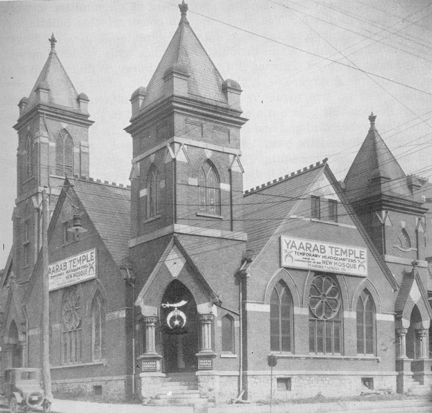 In 1924, the
Yaraab Temple relocated into a former church building on the corner of
Harris and Spring Streets (Pictured Right).
While this new Mosque was much bigger than
the house on Peachtree Street, this was seen from the beginning as a
temporary move since the Shrine still had its plan on eventually
building a purpose-built Mosque on the Peachtree Street property. The number of members in the Yaraab
Temple were growing explosively. Prior to 1928, the membership in the Atlanta Yaarab Temple had
grown to over 5,000 members and it was still gaining new members!
In 1924, the
Yaraab Temple relocated into a former church building on the corner of
Harris and Spring Streets (Pictured Right).
While this new Mosque was much bigger than
the house on Peachtree Street, this was seen from the beginning as a
temporary move since the Shrine still had its plan on eventually
building a purpose-built Mosque on the Peachtree Street property. The number of members in the Yaraab
Temple were growing explosively. Prior to 1928, the membership in the Atlanta Yaarab Temple had
grown to over 5,000 members and it was still gaining new members!
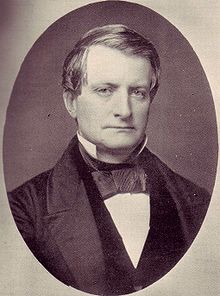
The first documentation
I have found regarding the property that the Atlanta Fox Theatre
sits on states that in 1849 the property was part of a 405-acre
farm owned by Mr. Richard Peters (shown above). The property stretched
from
present day North Avenue north to Eight Street, west to east from
Argonne Street to Bedford
Place and beyond Plum Street. I have used a modern city map to
give a basic outline of Mr. Peter's property. The Red "X" is
where the the Fox/Shrine Mosque was to be built. Mr. Peters has another
place in
local Atlanta history as he established the first streetcar
line in the city.
During the War Between the States, the site was the location of
Fortification (or Fort) "K" in 1863. The fortification was used to
defend
the outkirts pf Atlanta from the invading Union forces, led by General
WIlliam T. Sherman. It was not a fort as we have come to imagine them.
Rather, it was series of dirt berms dug up to help protect Confederate
soldiers and canons.
In 1878, a portion of the
property on the corner of Peachtree and Kimball Streets was
purchased by Hannibal Ingalls Kimball (pictured above), an entrepreneur and
city planner. This area eventually became a highly desireable
neighborhood for the fashionable people of Atlanta to live in.
In the late 1880's, a house was built on the property
who's deed was placed in Mrs. Kimball's name. The family lived there
for a few decades.
Colonel Willis
E. Ragan (
pictured above) eventually took ownership of the house and resided there along with his family. The house
was a redesigned to be a showplace mansion with magnificent gardens.
Colonel Ragan not only loved his gardens (
pictured below), but he loved to entertain and
this house was a frequent venue of lavish societal affairs.
The
hand painted
photograph below was taken as such an affair. A dinner party was being
held in honor of Sir Thomas Lipton, founder of the Lipton Tea Company.
Sir Thomas is seated with wife in the lower left while Col. Ragan is
seated directly across from Sir Thomas..
 Across
the street from this location already stood the
Georgian Terrace Hotel and the Ponce Apartments, constructed in 1911
and 1913 respectively. In the photo on the right, this is was the view
of both the Terrace and Ponce Apartments as seen from Shrine property,
after the Ragan residence was razed.
The Ragans had moved out of the house long before the Shriners purchased the property. In the interim, the house had
become run down. It reportedly was being used as a house of ill repute just before its sale to the
Shriners in 1923.
Across
the street from this location already stood the
Georgian Terrace Hotel and the Ponce Apartments, constructed in 1911
and 1913 respectively. In the photo on the right, this is was the view
of both the Terrace and Ponce Apartments as seen from Shrine property,
after the Ragan residence was razed.
The Ragans had moved out of the house long before the Shriners purchased the property. In the interim, the house had
become run down. It reportedly was being used as a house of ill repute just before its sale to the
Shriners in 1923.
It is reported that by the time the Yaarab Temple purchased the
property, other fashionable neighborhoods were being developed around
the outskirts of Atlanta as more people began to relocate to those
areas. Kimball Street/Ponce deLeon Avenue became a very fashionable
area all the way to the nearby City of Decatur.
In 1925 with the property paid for, the Yaarab
Temple began to formalize their plans for their Shrine Mosque. A
building fund was established in October. A fund raising
campaign that lasted only 25 days raised over a million dollars
to fund the construction project. On November 23rd that same year, a ceremonial ground breaking was held to mark
what was to be the beginning of construction. The former Ragan house was
demolished, the ground cleared, and made ready for the Mosque's construction. There was much fandare made about this,
although it would be over three years
before construction would actually get underway.
The Shriners decided
to hold an architectural competition to search for the best possible mosque
design that would "Out-Baghdad Baghdad".
The Shriner's wanted more than a mere clubhouse. They wanted a
true complex with a multitude of special features. Not only did they
want administravie offices, they wanted a banquet hall, a
large lounge area, a smoking room, complete with a tobacco shop, a
cafeteria, gymnasium, rehearsal halls and private rehearasl rooms
along with showers and locker rooms for their musical units.
They even wanted private bedrooms for members and guests to spend the
night should that be
required.
Shriners
have always been very community minded and when they
decided to
build their new mosque, they wanted it to be a contributing part
of the community. From the start, it was envisioned that the complex
would have a large auditorium that could be used as a civic
auditorium when it was not needed for Shrine events. Since the
Shriners would only use the auditorium about 6 to 10 times a year, that
left at least 355 days out of the year for the auditorium to be used
by the community. It was felt this
could be a huge contribution to the city as it was originally hoped the auditorium would seat up to 7,500
people and be used for the fine arts (Opera, Choral, and Dramatic presentations.
Atlanta's Municipal Auditorium was
the only huge auditorium in Atlanta, but it was more of a basic auditorium that was suited for
such things as farm shows, circuses, rodeos,
and later wrestling events. Atlanta did not have a large "refined" civic
auditorium. The largest hall better suited for "the performing arts" held
around 2,000.
The Shrine auditorium was envisioned from the start to serve that
purpose as well as to be able to allow the Shrine to have a place where
every member could attend a Shrine function.
 One of the architects that submitted a desgin was Ollivier J. Vinour
(Pictured Left,
he spelled his name this way to avoid being
called "Oliver"). He was a young and upcoming architect that
was the minor partner of the Marye, Alger, and Vinour
architectural firm. Vinour was born in France on March 18, 1889.
He was educated at the Ecole Nationale des Arts Decortatifs in
Paris. He moved to the United States after the Great War in 1923. Vinour designed
a flamboyant
interpretation
of a mosque with onion domes, towers, horseshoe and lancet arches,
and minarets. Amazingly, Vinour had never visited the Middle
East and relied on books and illustrations to influence and inspire his
Mosque creation. It is widely acknowledged that Mr Vinour
was responsible for the majority of the Mosque's design with
minor input from others. The presentation was so strong, nothing
else compared to it and Vinour's design was the clear winner.
One of the architects that submitted a desgin was Ollivier J. Vinour
(Pictured Left,
he spelled his name this way to avoid being
called "Oliver"). He was a young and upcoming architect that
was the minor partner of the Marye, Alger, and Vinour
architectural firm. Vinour was born in France on March 18, 1889.
He was educated at the Ecole Nationale des Arts Decortatifs in
Paris. He moved to the United States after the Great War in 1923. Vinour designed
a flamboyant
interpretation
of a mosque with onion domes, towers, horseshoe and lancet arches,
and minarets. Amazingly, Vinour had never visited the Middle
East and relied on books and illustrations to influence and inspire his
Mosque creation. It is widely acknowledged that Mr Vinour
was responsible for the majority of the Mosque's design with
minor input from others. The presentation was so strong, nothing
else compared to it and Vinour's design was the clear winner.
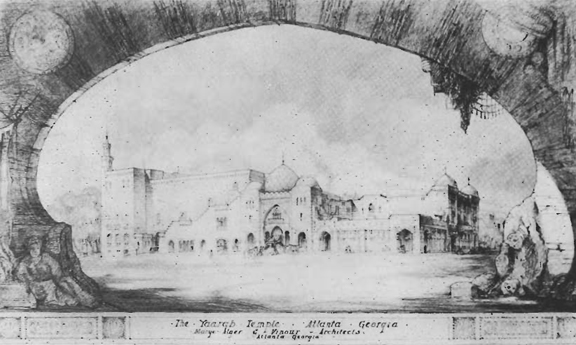
The illustration above is Vinour's original design for the Yaraab
Temple
Mosque. While it is readily identifiable as what we now call "The Fox
Theatre", it is a bit different from how the building eventually came
to be. This is the view looking at the building from Peachtree
Street looking north, over an open field seeing the front of the
building running alongside Kimball Street (now Ponce DeLeon Ave). While
slightly out of proportion, the building can be divided into two
sections. The right side, facing Peachtree Street is the Mosque portion
of the building. The left side, beginning under the massive Onion Dome,
is the auditorium portion of the structure.
In an interview in the Atlanta Journal Magazine of February 16,
1930, P. Thornton Marye elaborated on the inspirations for the design: "The
purpose was to retain the spirit of Islam throughout, and yet to use
all types of Mohammedan architecture that might be seen by a pilgrim on
his journey to Mecca, whether he came to the Holy City from the east,
north or south. Thus the arcade entrance with shops on either side was
designed after the fashion of a Persian bazaar."
Although the
building is in no way a copy of any one Oriental structure it tries to
embody the entire scope of Mohammedan Art.
The Mosque was designed to be utterly incredible, unlike any
other Shrine Mosque in the World! Vinour's proposal was unlike any
other submitted design and it was so striking, there was no question it
would be the winning submission.
Vinour later
went on to design the Atlanta Railroad
Terminal
Building, Atlanta City Hall, and the Southern Bell Headquarters
among other many notable and highly aclaimed buildings. Shortly after Mr. Vinour moved away
from Atlanta, he was killed in an automobile accident in 1935 at the young age of 46.
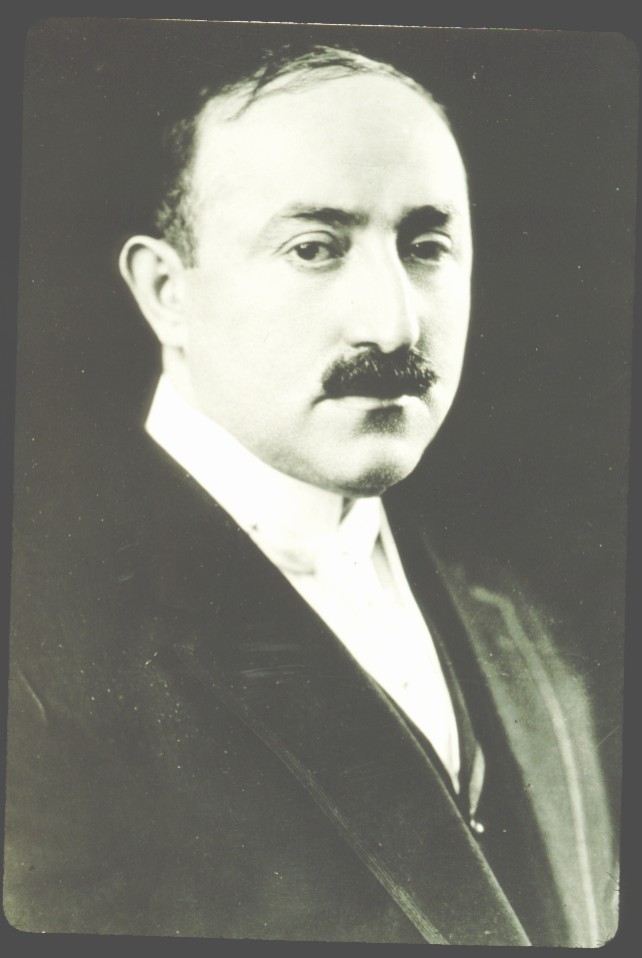 By mid-1927, well over one million dollars
had been raised by the Temple but the building was projected to
cost in excess of over two million dollars. The Yaarab
Temple still did not have enough money to build the Yaarab Shrine
Temple Mosque. During the time the Yaarab Shriners planned their grand Temple Mosque, the relatively new
motion
picture film industry was blossoming. Motion
Pictures had grown
from a nickelodeon curiosity into a serious entertainment
industry that was now packing large movie theaters, the grandest of which were being called
Movie Palaces. In the 1920s, motion pictures had become a major
industry and tens of thousands of movie theaters were in operation
throughout the United States.
By mid-1927, well over one million dollars
had been raised by the Temple but the building was projected to
cost in excess of over two million dollars. The Yaarab
Temple still did not have enough money to build the Yaarab Shrine
Temple Mosque. During the time the Yaarab Shriners planned their grand Temple Mosque, the relatively new
motion
picture film industry was blossoming. Motion
Pictures had grown
from a nickelodeon curiosity into a serious entertainment
industry that was now packing large movie theaters, the grandest of which were being called
Movie Palaces. In the 1920s, motion pictures had become a major
industry and tens of thousands of movie theaters were in operation
throughout the United States.
One of the great motion pictures pioneers was William Fox. Fox (pictured left), originally named Wilhelm Fuchs, he was
born
on the very first day of 1879 in the town of Tulchva in what was
then Austria-Hungary. His parents were German Jews who brought
their young son to America when he was only nine months old. He
started
his own fur business in 1900 at the age of 21. He later sold that
company to start the Greater New
York Film Rental Company in 1904. He purchased a run-down
Nickelodeon in Brooklyn and later converted it into a
146-seat theatre in 1906. With its success, he purchased more
Nickelodeons to form a cinema empire.
With his fledgling chain of theaters, Fox then began to fight against the movie
monopoly operated by the Motion Picture Patents Company that was owned by Thomas
Edison. The fight ended in 1912 when the Supreme Court ruled in
Fox's favor. With the monopoly broken, Fox then founded Fox Films, which on average produced four
feature
films a year. Operation of Fox's fledgling empire were consolidated in 1915 into the
Fox Film Corporation, composed of the Fox Film studio and the Fox Theatre chain. In 1916, the company moved to 13 acres
in Hollywood California, where many movie companies were relocating. By 1927, there were over 900
theaters in the Fox Theaters chain and was still growing at a very fast pace. Most of Fox's theaters were located
on the West Coast, but Fox was now beginning to expand
his empire to include the eastern portion of the United States with an
eye on the Southeast.
Faced with the problem of raising more money to cover the construction costs of their new Shrine Mosque, the Shriners
came up with the idea of entering into
a long term lease arrangement with a film studio to show movies in the auditorium of their Mosque. While that in itself
would not solve their immediate financial shortfall, a long term lease could
be
used as proof of income so a bank would be comfortable in giving
the Shriners a mortgage loan, and thus, the money needed to build the
Mosque.
 It just so happened that in 1927, William
Fox was beginning to look into building a large movie
palace in Atlanta, the percieved capitol of the New South.
The
Shriners approached the Fox Corporation to see if they would be
interested in leasing their auditorium. Pretty soon, they were involved
in serious negotiations
with Fox Films Corporation. As 1927 came to an end, Fox and the
Shriners made a concerted effort to have a lease in place by the
beginning of 1928. In January of 1928, a twenty-one year lease was agreed to and
signed. The agreement had Fox operating the auditorium
as a
movie
theater while the Shriners would get to use the auditorium for its
private functions six times a year. The lease held
an estimated value of three
million dollars. In which, Fox would pay the Temple $105,000 per year
for the first seven years, $115,000 per year for the next seven years,
and $125,000 for the final seven years of the lease. At the
announcement of the partnership, William Fox proclaimed, “If
Atlanta wants Roxy presentations, they will be produced in the same
elaborate fashion that characterizes them in New York. If it’s
vaudeville and high type pictures that are desired by the Atlanta
public, we will give them the best.”
It just so happened that in 1927, William
Fox was beginning to look into building a large movie
palace in Atlanta, the percieved capitol of the New South.
The
Shriners approached the Fox Corporation to see if they would be
interested in leasing their auditorium. Pretty soon, they were involved
in serious negotiations
with Fox Films Corporation. As 1927 came to an end, Fox and the
Shriners made a concerted effort to have a lease in place by the
beginning of 1928. In January of 1928, a twenty-one year lease was agreed to and
signed. The agreement had Fox operating the auditorium
as a
movie
theater while the Shriners would get to use the auditorium for its
private functions six times a year. The lease held
an estimated value of three
million dollars. In which, Fox would pay the Temple $105,000 per year
for the first seven years, $115,000 per year for the next seven years,
and $125,000 for the final seven years of the lease. At the
announcement of the partnership, William Fox proclaimed, “If
Atlanta wants Roxy presentations, they will be produced in the same
elaborate fashion that characterizes them in New York. If it’s
vaudeville and high type pictures that are desired by the Atlanta
public, we will give them the best.”
Minor, yet important alterations
would be made to the building to adapt its use as a movie theater as
well as to Mr. Fox's preferences. The biggest change was the creation
of an alternate main entrance to the
auditorium that faced Peachtree Street because Mr. Fox felt Peachtree
Street would be the main avenue to and from the downtown district. In
the original plans, there was to be
a member's only entrance into the Mosque about midway downthe
building's Peacthree Street side. By eliminating a minor ball room
called the Korassian
Grotto and the gymnasium, a 148 foot deep arcade took
their place to allow for both a main entrance and a large sheltered
area
for patrons waiting to enter the theater.
There was one other change in the Shriner's plan I should mention, but
I believe this took place prior to entering into their lease with Fox.
Originally, the Shriners wanted the auditorium to seat approximately
7,500 individuals, but once the plans were set, that was reduced down
to about 5,400. I think there were two possible explanations to this.
The first was not being able to fir an auditorium of that size onto the
property they owned A second and more likely reason would have
been for economic measures. Perhaps
it was a combination of both as I imagine we'll never know the
actual reasons.
With the lease
in hand, the Shriners approached Trust Company Bank of
Georgia for a mortgage that at that time was thought would be
enough
funds to complete the building. At this point, we need to stop for
a moment to discuss one of the
Fox
Theatre's biggest mystery.No
one knows exactly what it cost to build the Fox. The most
bantered
about figure is around three million dollars. Furthermore, we
have no idea how much the Trust Company mortgage was for.
The reason for
this is that the Shriners kept their private financial affairs
to themselves. Compounding that in 1964, their Shrine Mosque located on Ponce DeLeon Avenue caught
fire
and was heavily damaged, destroying all of their records,
including
documents regarding
the Fox Theatre. While a true original construction cost will
never be
known, it is estimated it would take between 200-400 million
dollars
to rebuild the Fox from scratch today.
The actual start of construction
began on June 15, 1928 after the
cornerstone was laid in
a grand formal ceremony. Construction was well underway by the fall
of that year, and to everyone's surprise, the Shriners were told that they were once again short
on funds to
complete the building! With all of their funding options exhausted, The
Shriners were in real trouble. They were now obligated by
contract to deliver to
Fox a fully functioning theater by January 1, 1930. Since they could not cut back on anything in the auditorium, the
only option was to scale back the
construction plans of the Mosque facilities.
Referring back to the original illustration of the Atlanta Mosque,
pictured above, the
building was not only opulent in design, but also in its facilities.
The original plans had multiple banquet and meeting rooms, multiple
kitchens, a library, cafeteria, smoking room and tobacco shop,
overnight accomodations, and even
a gymnasium! Where were all these wonderful rooms located? Most were
located in a section that sat in front of the Grand Banquet Hall that
extended to the edge building on Peachtreet Street.
From the ground level, that portion of the Mosque would have been three
to five stories tall, dependent on ceiling height of each floor!
Facing another gigantic financial shortfall, the
Shriners
were faced with the only option they had; to cut back on their
Mosque construction plans. They started by deciding what was absolutely
important for them to have an
operational Mosque. The
Mosque's business offices, Banquet Hall, Grand Salon, the
muscial
unit's practice
areas (Now known as the Spanish Room) as well as the below ground level storage areas, showers, and locker
rooms would be retained. Taking things a step further, the
street
level portion of the Mosque would not be constructed as originally
envisioned. In that space, "temporary" retail spaces would be
constructed. One of the legends that has not been substanciated, is that William Fox
himself suggested incorporating the retail spaces as a means for the Shriners to generate
additional
income. By renting these shop spaces, the Shriners
would be able accelerate their plans to pay off the mortgage. Once the mortgage
was paid off, a combination of rental income and additional fundraising would allow the
Shriners to complete the Mosque as originally intended in as little as
ten years time. It also said that Mr. Fox also suggested
that large windows be incorporated into the shops that lined the sides of the new Arcade to help avoid the space
being dark and clastrophobic.
It certainly was a bitter pill to
take, but it was a logical and well envisioned plan of action that made a lot
of sense. Looking at what was abandoned, I can easily
speculate that the financial shortfall had to be at least between
a very massive amount, perhaps somewhere between a half to a full million dollars!
While all this was going on, construction on the steel framework of the Auditorium continued,
then resumed on the Mosque portion of the building once the plans were revised. After the redesign of the Mosque, construction
proceeded
smoothly. As construction
approached conclusion, it was discovered that they had acutally had a cash surplus. It
was decided to spend those funds on improvements to the auditorium with
the addition of screw-driven rising platforms for the orchestra pit,
organ,
as well as the main stage. In under eighteen months from the start of construction,
the Atlanta Mosque/Fox Theatre was at lasted completed!
Meanwhile, as the Atlanta Shrine Mosque was being constructed, William Fox announced he was undertaking
an agreesive
takeover of Loews, Inc. and its
Metro-Goldwyn-Mayer film studio. This
takeover was planned through the purchase of controlling stock.
Fox's takeover move was very emblematic
of the deep-rooted problems with the American banking system and the Stock
Market.
Everyone that was anyone (or wanting to be "someone") was investing in
the Stock Market. Growing companies were issuing stocks
left and right because people were eagerly snapping stock shares up. While banks
today still loan money for people to buy stock, they now
require the person they loan money to have a serious
financial stake, or collateral, so the bank feels comfortable they will get their investment
back. But in the late 1920s, banks were so eager to loan money, they did so with little to no investment on part of
person getting the
loan. This turned into a very flimsy house of cards and in October of
1929, the house of cards utterly collapsed, plunging the World into the Great
Depression. Worst of all, no one seemed to see it coming, or rather no
one
bothered to see it coming.
As William Fox was accumulating shares of Loew's, Inc. He suffered a
personal disaster. He and his driver were involved in a serious automobile
accident. Fox was seriously injured and his driver was killed. It took
several months for Fox to recover and during this period, the
Stock Market Crash took place. Fox's fortunes were doomed. By December,
William Fox, found himself
going from a multi-millionare with a personal fortune of over four
hundred million dollars, found himself in personal debt for an astounding
ninety million
dollars.
The Yaarab Shrine Temple Mosque and it's Fox Theatre did not escape the
intial ravages of the Great Depression. Almost immediately, a large
number of companies found themselves out of business. One such company
was the M.P. Moller company of Baltimore, Maryland. They had
produced the largest theater organ in the world for the
Mosque. While most
of the organ was delivered, a few of the biggest pipes had yet to be
made before
the company was now put out of business. Another instance was the
company that was to produce the auditorium's main chandeliers also went
out of business before the light fixtures could be delivered.
In order
to provide the much-needed illumination for the auditorium by opening
day, the chief
electrician went down to a local hardware store, purchased several
large wash tubs, punched the bottoms out and stamped the sides with a
simple desorative pattern. He put basic light fixture inside the
tubs and
installed them as the main chandeliers around the auditorium. They
remained in use until the
late 1980's. You can easily see the wash tub lights in
this picture of the auditorium from the mid-1960s below. Unless
you knew, no one ever knew these lamps begun life intended to wash
clothes with.
Despite those setbacks, work arounds were found and the Atlanta Fox
Theatre opened on Christmas Day 1929. Thousands of
Atlantans that lined up around the block for a glimpse into the new
modern marvel. The doors opened up at 12:45pm and the first show began
at 1:15. According to the newspaper ad in the Atlanta
Constitution (the morning newspaper) and the Atlanta Journal (the evening
newspaper.)
The feature
movie, "Salute",
began at 2:29 and 3:08, however the run time for Salute
was 84 minutes (1 hour, 24 minutes). It would have been impossible to
repeat the feature at 3:08. The evening performances were published to
being at 7:43 and 10:19pm. Furthermore, the "Gala Inaugural Program"
states the doors opened at Noon while newspaper showed the doors
opening at 12:45!
Admission prices were twenty cents for children, sixty cents for
adults, and seventy-five cents for all seats in the Loge, the first
rows of the balcony, arguably the best seats in the auditorium.
The evening "Premiere" show began at 7:43 Christmas evening with the
house organist, Iris Vining Wilkins performing on
the "Mighty
Möller" pipe organ. Enrico Leide
then led
the Fox Grand Orchestra to play "This
Shrine
of Beauty", a variation of Pomp And
Circumstance,
March #1 by Sir Edward Elgar. This was followed by Walt
Disney's first talking cartoon, "Steamboat
Willie",
starring Mickey Mouse. The Master of Ceremonies, Don
Wilkins (husband to Iris) then officiated over the rest of
the live performances including a sing-a-long, and the Fanchon
and Marco dance troupe's performance of "Beach
Nights Ideas" performed by their "Sunkist
Beauties"
that incorporated a 12 girl dance chorus of Atlanta natives. Also
on the bill were The Kitaros, a Japanese acrobatic
trio;
Davis and LaRue, a comedy team; Art Hadley,
a musical
cartoonist; the dance team of Bradley & Evain;
Maxine
Doyle, a musical-comedy artist, and finally Jean
&
Jeanette who were billed as "The Singing
Sisters".
The projectors started to roll again with the latest Fox Movietone
Newsreel, and trailers of up-coming movies that were going to be shown
at the Fox. Then, almost as an anticlimax to the evening, the feature
film unspooled. That first film shown was Salute,
directed by John Ford and David Butler.
The film
starred George O'Brien, Helen Chandler, William Janney,
and Stepin Fetchit. an very young John Wayne had a very small part in the movie as well. The plot of the film was
described,
as "John Randall is an Army cadet at West Point His younger
brother Paul is a midshipman at the Naval Academy. John contrives
to help Paul's timid romantic interest in Nancy Wayne by pretending
to be interested in her himself. Paul, however, takes offense,
and determines to beat his brother in the Army-Navy football game
on purely personal grounds. Meanwhile, Paul and fellow midshipman
Albert Price are hazed and tormented by upperclassmen."
The film's reviews describe the film as a less than memorable movie,
however patrons are thrilled to see it in the new and amazing Fox
Theatre.
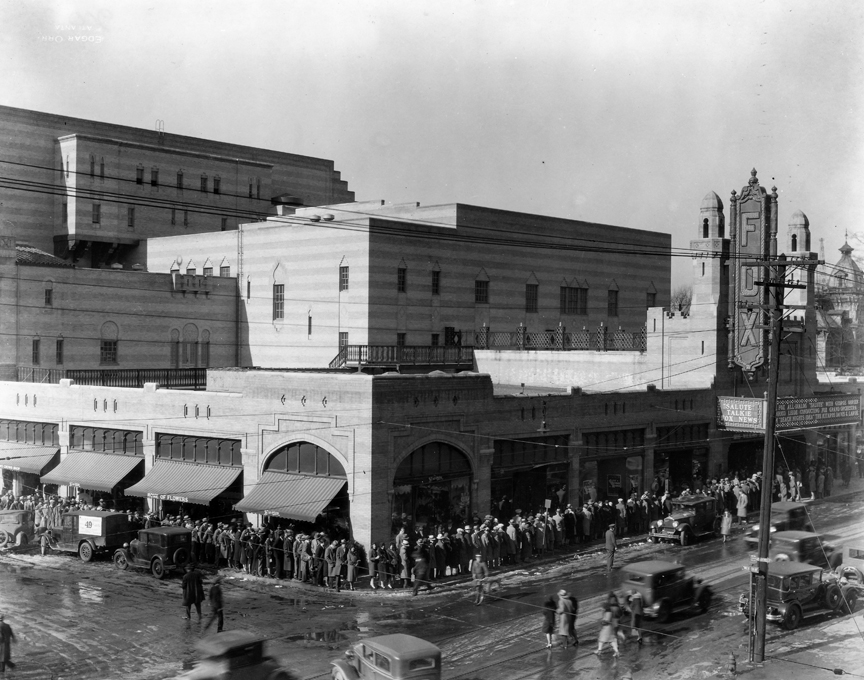
This concludes Part One of our story. Please continue one to read Part Two, The Early Years and Chaos 1930-1935.

Return
to the Fox
Theatre Main Index.


 Freemasonry,
or as it is more well known today as simply "The Masons", are a fraternal
organization that arose from obscure origins in the late 16th or early
17th century. Freemasonry exists in various forms all over the world,
with a membership estimated at several million men. The fraternity is
administratively organised into independent Grand Lodges or sometimes
"Orients", each of which governs its own jurisdiction.
Freemasonry,
or as it is more well known today as simply "The Masons", are a fraternal
organization that arose from obscure origins in the late 16th or early
17th century. Freemasonry exists in various forms all over the world,
with a membership estimated at several million men. The fraternity is
administratively organised into independent Grand Lodges or sometimes
"Orients", each of which governs its own jurisdiction.
 With
the help of other Knickerbocker Cottage regulars, Fleming concieved and
drafted rituals, designed the emblem as well as ritual costumes,
formulated a
salutation, and declared that members would wear a red fez. As with the
Freemasons, it was to be a men's only group. In order to join the
group, you had to be a full member in good standing with the Masonic
Order.
With
the help of other Knickerbocker Cottage regulars, Fleming concieved and
drafted rituals, designed the emblem as well as ritual costumes,
formulated a
salutation, and declared that members would wear a red fez. As with the
Freemasons, it was to be a men's only group. In order to join the
group, you had to be a full member in good standing with the Masonic
Order.  In
December 1889,
thirty-two Masons of the Knights Templar and Scottish Rite orders in
Atlanta organized the
Yaarab Temple "Shrine" in Atlanta. The Yaarab
Temple was made a full chapter of the Shriner's organization in June of
1890. In the beginning, the Yaarab Temple met at the Atlanta Masonic
Lodge. Membership in the Yaarab Temple grew quickly as it was a very popular group to belong to.
In
December 1889,
thirty-two Masons of the Knights Templar and Scottish Rite orders in
Atlanta organized the
Yaarab Temple "Shrine" in Atlanta. The Yaarab
Temple was made a full chapter of the Shriner's organization in June of
1890. In the beginning, the Yaarab Temple met at the Atlanta Masonic
Lodge. Membership in the Yaarab Temple grew quickly as it was a very popular group to belong to. 
 In 1920 and with a membership of nearly 4,000 members, they relocated their base of operations from the Masonic Lodge to a
house located on Peachtree Street near Ellis Street in 1920 (Pictured Left).
Because of its size and the Shrine's large membership, I imagine formal meetings
that comprised large
numbers of members still took place at some other
large venue. That same year, two lots, one on Ivy Street and another on
Baker Street were purchased as potential sites for the Temple's new
Mosque.
In 1920 and with a membership of nearly 4,000 members, they relocated their base of operations from the Masonic Lodge to a
house located on Peachtree Street near Ellis Street in 1920 (Pictured Left).
Because of its size and the Shrine's large membership, I imagine formal meetings
that comprised large
numbers of members still took place at some other
large venue. That same year, two lots, one on Ivy Street and another on
Baker Street were purchased as potential sites for the Temple's new
Mosque.  In 1924, the
Yaraab Temple relocated into a former church building on the corner of
Harris and Spring Streets (Pictured Right).
While this new Mosque was much bigger than
the house on Peachtree Street, this was seen from the beginning as a
temporary move since the Shrine still had its plan on eventually
building a purpose-built Mosque on the Peachtree Street property. The number of members in the Yaraab
Temple were growing explosively. Prior to 1928, the membership in the Atlanta Yaarab Temple had
grown to over 5,000 members and it was still gaining new members!
In 1924, the
Yaraab Temple relocated into a former church building on the corner of
Harris and Spring Streets (Pictured Right).
While this new Mosque was much bigger than
the house on Peachtree Street, this was seen from the beginning as a
temporary move since the Shrine still had its plan on eventually
building a purpose-built Mosque on the Peachtree Street property. The number of members in the Yaraab
Temple were growing explosively. Prior to 1928, the membership in the Atlanta Yaarab Temple had
grown to over 5,000 members and it was still gaining new members! 
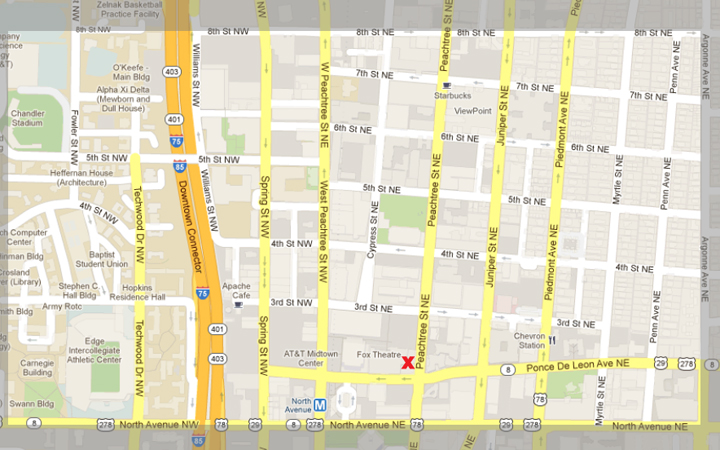
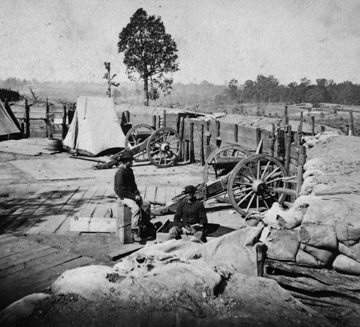
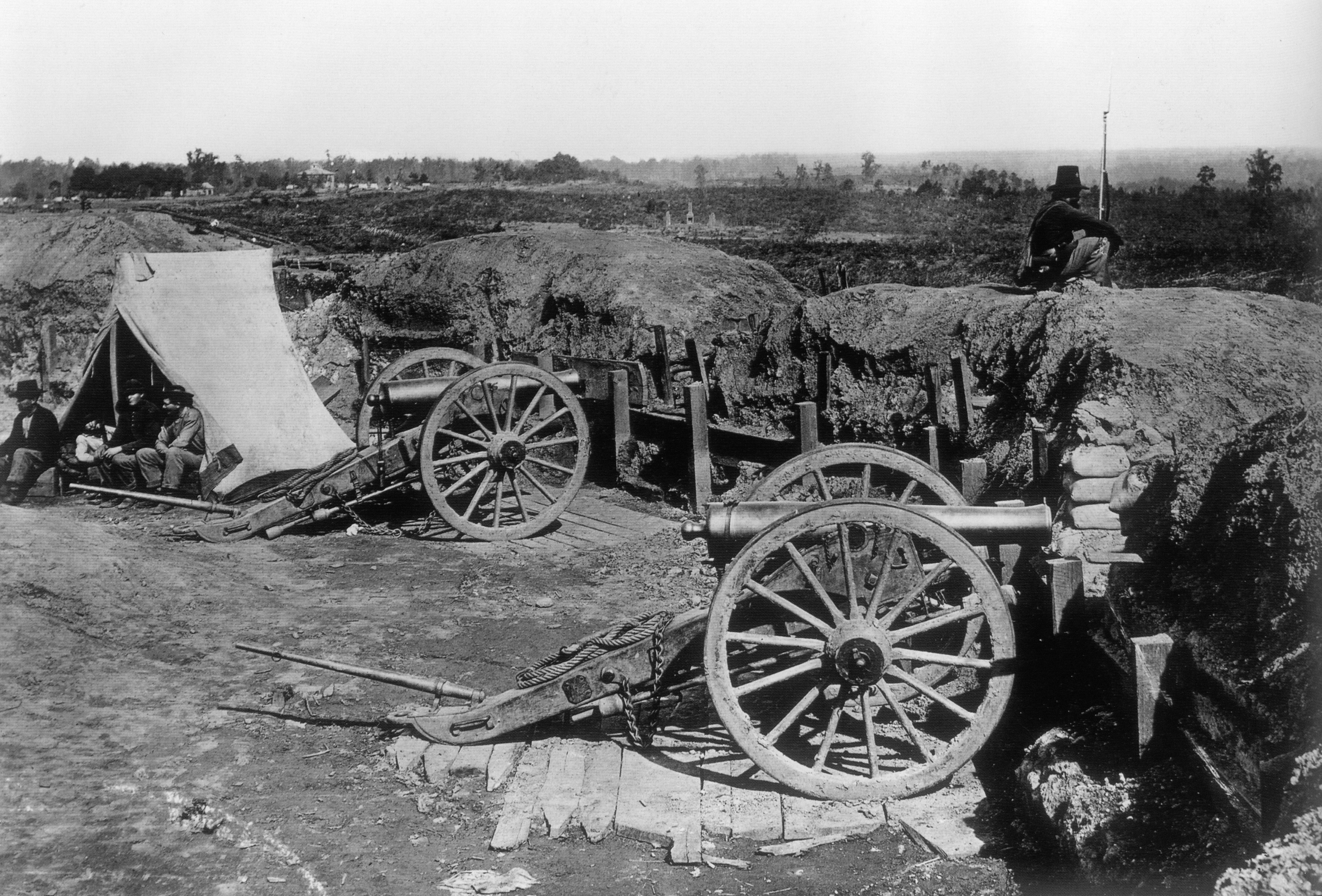



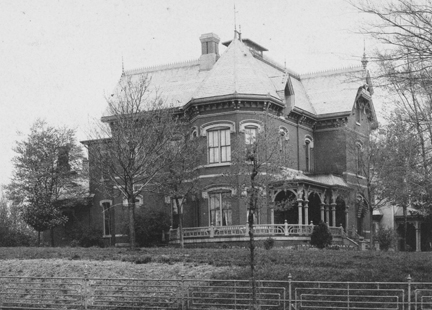
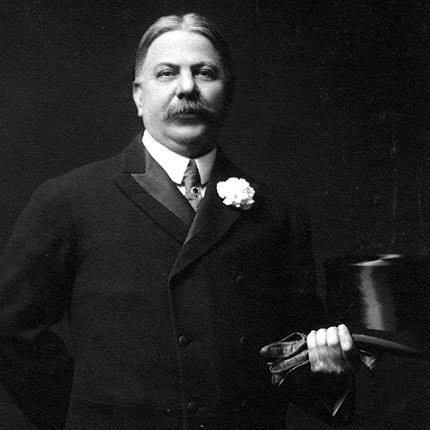
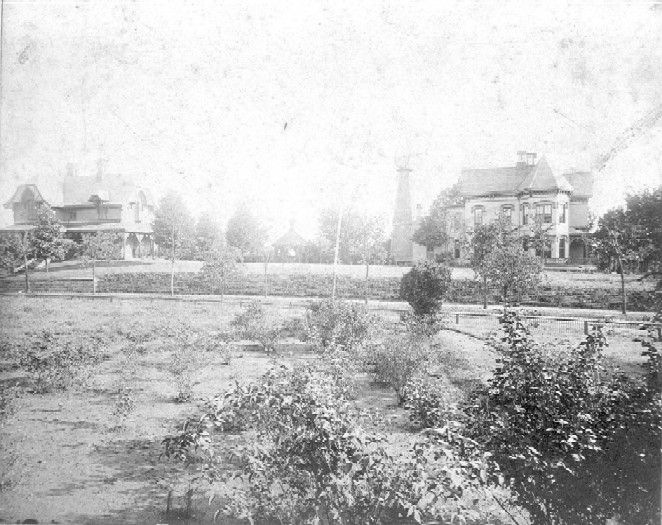
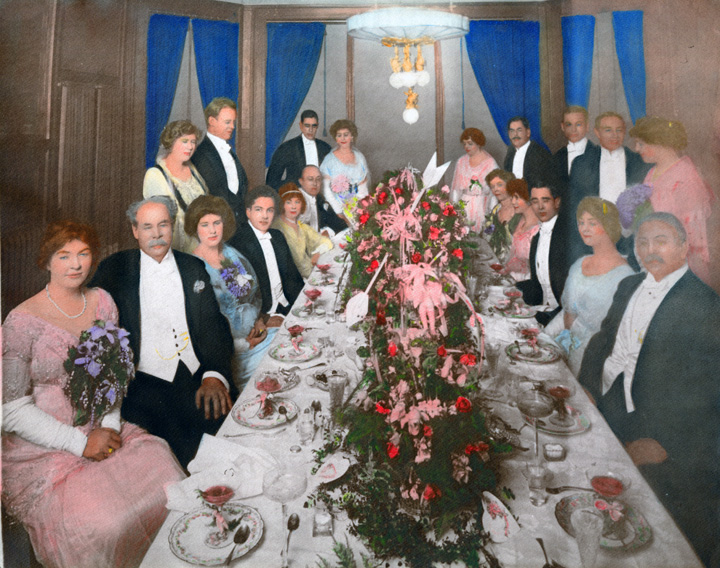
 Across
the street from this location already stood the
Georgian Terrace Hotel and the Ponce Apartments, constructed in 1911
and 1913 respectively. In the photo on the right, this is was the view
of both the Terrace and Ponce Apartments as seen from Shrine property,
after the Ragan residence was razed.
The Ragans had moved out of the house long before the Shriners purchased the property. In the interim, the house had
become run down. It reportedly was being used as a house of ill repute just before its sale to the
Shriners in 1923.
Across
the street from this location already stood the
Georgian Terrace Hotel and the Ponce Apartments, constructed in 1911
and 1913 respectively. In the photo on the right, this is was the view
of both the Terrace and Ponce Apartments as seen from Shrine property,
after the Ragan residence was razed.
The Ragans had moved out of the house long before the Shriners purchased the property. In the interim, the house had
become run down. It reportedly was being used as a house of ill repute just before its sale to the
Shriners in 1923.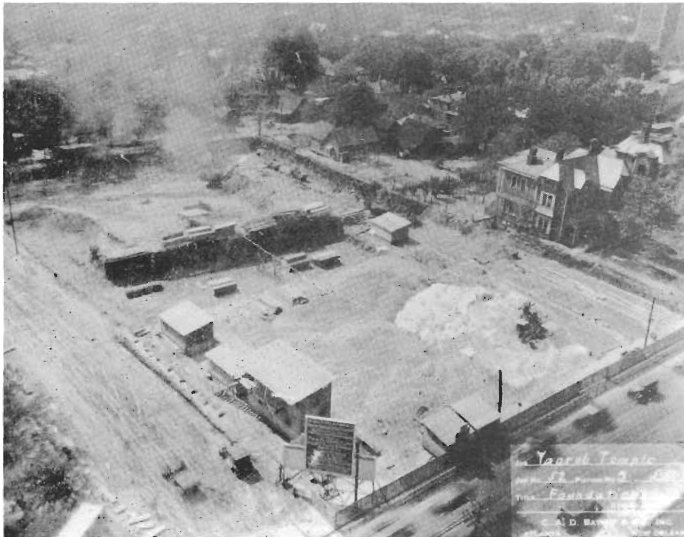
 One of the architects that submitted a desgin was Ollivier J. Vinour
(Pictured Left,
he spelled his name this way to avoid being
called "Oliver"). He was a young and upcoming architect that
was the minor partner of the Marye, Alger, and Vinour
architectural firm. Vinour was born in France on March 18, 1889.
He was educated at the Ecole Nationale des Arts Decortatifs in
Paris. He moved to the United States after the Great War in 1923. Vinour designed
a flamboyant
interpretation
of a mosque with onion domes, towers, horseshoe and lancet arches,
and minarets. Amazingly, Vinour had never visited the Middle
East and relied on books and illustrations to influence and inspire his
Mosque creation. It is widely acknowledged that Mr Vinour
was responsible for the majority of the Mosque's design with
minor input from others. The presentation was so strong, nothing
else compared to it and Vinour's design was the clear winner.
One of the architects that submitted a desgin was Ollivier J. Vinour
(Pictured Left,
he spelled his name this way to avoid being
called "Oliver"). He was a young and upcoming architect that
was the minor partner of the Marye, Alger, and Vinour
architectural firm. Vinour was born in France on March 18, 1889.
He was educated at the Ecole Nationale des Arts Decortatifs in
Paris. He moved to the United States after the Great War in 1923. Vinour designed
a flamboyant
interpretation
of a mosque with onion domes, towers, horseshoe and lancet arches,
and minarets. Amazingly, Vinour had never visited the Middle
East and relied on books and illustrations to influence and inspire his
Mosque creation. It is widely acknowledged that Mr Vinour
was responsible for the majority of the Mosque's design with
minor input from others. The presentation was so strong, nothing
else compared to it and Vinour's design was the clear winner. 
 By mid-1927, well over one million dollars
had been raised by the Temple but the building was projected to
cost in excess of over two million dollars. The Yaarab
Temple still did not have enough money to build the Yaarab Shrine
Temple Mosque. During the time the Yaarab Shriners planned their grand Temple Mosque, the relatively new
motion
picture film industry was blossoming. Motion
Pictures had grown
from a nickelodeon curiosity into a serious entertainment
industry that was now packing large movie theaters, the grandest of which were being called
Movie Palaces. In the 1920s, motion pictures had become a major
industry and tens of thousands of movie theaters were in operation
throughout the United States.
By mid-1927, well over one million dollars
had been raised by the Temple but the building was projected to
cost in excess of over two million dollars. The Yaarab
Temple still did not have enough money to build the Yaarab Shrine
Temple Mosque. During the time the Yaarab Shriners planned their grand Temple Mosque, the relatively new
motion
picture film industry was blossoming. Motion
Pictures had grown
from a nickelodeon curiosity into a serious entertainment
industry that was now packing large movie theaters, the grandest of which were being called
Movie Palaces. In the 1920s, motion pictures had become a major
industry and tens of thousands of movie theaters were in operation
throughout the United States.  It just so happened that in 1927, William
Fox was beginning to look into building a large movie
palace in Atlanta, the percieved capitol of the New South.
The
Shriners approached the Fox Corporation to see if they would be
interested in leasing their auditorium. Pretty soon, they were involved
in serious negotiations
with Fox Films Corporation. As 1927 came to an end, Fox and the
Shriners made a concerted effort to have a lease in place by the
beginning of 1928. In January of 1928, a twenty-one year lease was agreed to and
signed. The agreement had Fox operating the auditorium
as a
movie
theater while the Shriners would get to use the auditorium for its
private functions six times a year. The lease held
an estimated value of three
million dollars. In which, Fox would pay the Temple $105,000 per year
for the first seven years, $115,000 per year for the next seven years,
and $125,000 for the final seven years of the lease. At the
announcement of the partnership, William Fox proclaimed, “If
Atlanta wants Roxy presentations, they will be produced in the same
elaborate fashion that characterizes them in New York. If it’s
vaudeville and high type pictures that are desired by the Atlanta
public, we will give them the best.”
It just so happened that in 1927, William
Fox was beginning to look into building a large movie
palace in Atlanta, the percieved capitol of the New South.
The
Shriners approached the Fox Corporation to see if they would be
interested in leasing their auditorium. Pretty soon, they were involved
in serious negotiations
with Fox Films Corporation. As 1927 came to an end, Fox and the
Shriners made a concerted effort to have a lease in place by the
beginning of 1928. In January of 1928, a twenty-one year lease was agreed to and
signed. The agreement had Fox operating the auditorium
as a
movie
theater while the Shriners would get to use the auditorium for its
private functions six times a year. The lease held
an estimated value of three
million dollars. In which, Fox would pay the Temple $105,000 per year
for the first seven years, $115,000 per year for the next seven years,
and $125,000 for the final seven years of the lease. At the
announcement of the partnership, William Fox proclaimed, “If
Atlanta wants Roxy presentations, they will be produced in the same
elaborate fashion that characterizes them in New York. If it’s
vaudeville and high type pictures that are desired by the Atlanta
public, we will give them the best.”


